Spatiotemporal Distribution and Influencing Factors of Ecosystem Vulnerability on Qinghai-Tibet Plateau
Abstract
1. Introduction
2. Literature Review
2.1. The Concept of Ecosystem Vulnerability
2.2. Assessment of Ecosystem Vulnerability
3. Study Area and Data Sources
3.1. Study Area
3.2. Data Sources
4. Research Method
4.1. Technical Route
4.2. Establishing an Ecosystem Vulnerability Assessment Indicator System
4.3. Mapping Ecosystem Vulnerability
4.3.1. Data Standardization
4.3.2. Spatial Principal Components Analysis
4.3.3. EVI Classification
4.4. Spatial Heterogeneity Analysis
4.5. Driving Force Analysis
5. Results
5.1. Spatiotemporal Variations in Ecosystem Vulnerability
5.1.1. Temporal Variations in Ecosystem Vulnerability
5.1.2. Spatial Variations in Ecosystem Vulnerability
5.2. Spatial Heterogeneity of Ecosystem Vulnerability
5.3. Determinants and Interactions of EVI
6. Discussion
6.1. Spatial Distribution of Ecosystem Vulnerability
6.2. Effects of Natural and Socio-Economic Factors on Ecological Vulnerability
6.3. Policy Implications
6.4. Limitations and Future Research Perspectives
7. Conclusions
Author Contributions
Funding
Institutional Review Board Statement
Informed Consent Statement
Data Availability Statement
Conflicts of Interest
References
- Gallopín, G.C. Linkages between vulnerability, resilience, and adaptive capacity. Glob. Environ. Chang. 2006, 16, 293–303. [Google Scholar] [CrossRef]
- Adger, W.N. Vulnerability. Glob. Environ. Chang. 2006, 16, 268–281. [Google Scholar] [CrossRef]
- Abutaleb, K.A.A.; Asmaa, M.; Hassan, E.; Ahmed, M. Climate change impacts, vulnerabilities and adaption measures for Egypt’s Nile Delta. Earth Syst. Environ. 2018, 2, 183–192. [Google Scholar] [CrossRef]
- Wang, X.; Zhong, X.; Gao, P. A GIS-based decision support system for regional eco-security assessment and its application on the Tibetan Plateau. J. Environ. Manag. 2010, 91, 1981–1990. [Google Scholar] [CrossRef]
- Turner, B.L.; Kasperson, R.E.; Matson, P.A.; McCarthy, J.J.; Corell, R.W.; Christensen, L.; Eckley, N.; Kasperson, J.X.; Luers, A.; Martello, M.L.; et al. A framework for vulnerability analysis in sustainability science. Proc. Natl. Acad. Sci. USA 2003, 100, 8074–8079. [Google Scholar] [CrossRef] [PubMed]
- Polsky, C.; Neff, R.; Yarnal, B. Building comparable global change vulnerability assessments: The vulnerability scoping diagram. Glob. Environ. Chang. 2007, 17, 472–485. [Google Scholar] [CrossRef]
- De Lange, H.J.; Sala, S.; Vighi, M.; Faber, J.H. Ecological vulnerability in risk assessment—A review and perspectives. Sci. Total Environ. 2010, 408, 3871–3879. [Google Scholar] [CrossRef] [PubMed]
- Wu, G.; Li, L.; Ahmad, S.; Chen, X.; Pan, X. A dynamic model for vulnerability assessment of regional water resources in arid areas: A case study of Bayingolin, China. Water Resour. Manag. 2013, 27, 3085–3101. [Google Scholar] [CrossRef]
- Ippolito, A.; Sala, S.; Faber, J.H.; Vighi, M. Ecological vulnerability analysis: A river basin case study. Sci. Total Environ. 2010, 408, 3880–3890. [Google Scholar] [CrossRef]
- Kang, H.; Tao, W.; Chang, Y.; Zhang, Y.; Xuxiang, L.; Chen, P. A feasible method for the division of ecological vulnerability and its driving forces in Southern Shaanxi. J. Clean. Prod. 2018, 205. [Google Scholar] [CrossRef]
- Gonzalez, P.; Neilson, R.; Lenihan, J.; Drapek, R. Global patterns in the vulnerability of ecosystems to vegetation shifts due to climate change. Glob. Ecol. Biogeogr. 2010, 19, 755–768. [Google Scholar] [CrossRef]
- Velepucha, P.A.E.; Chamba, J.A.M.; Mendoza, N.A.A.; Luna, T.L.O.; Rojas, N.S.S.; Furniss, M.J.; Howe, C.; Mendoza, Z.H.A. Tropical ecosystems vulnerability to climate change in southern Ecuador. Trop. Conserv. Sci. 2016, 9. [Google Scholar] [CrossRef]
- Comer, P.; Hak, J.; Reid, M.; Auer, S.; Schulz, K.; Hamilton, H.; Smyth, R.; Kling, M. Habitat climate change vulnerability index applied to major vegetation types of the western interior United States. Land 2019, 8, 108. [Google Scholar] [CrossRef]
- Teck, S.; Halpern, B.; Kappel, C.; Micheli, F.; Selkoe, K.; Crain, C.; Martone, R.; Shearer, C.; Arvai, J.; Fischhoff, B.; et al. Using expert judgment to estimate marine ecosystem vulnerability in the California Current. Ecol. Appl. 2010, 20, 1402–1416. [Google Scholar] [CrossRef]
- Zhang, Y.; Tao, B.; Li, Y. Assessment on the vulnerability of different ecosystems to extreme rainfalls in the middle and lower reaches of Yangtze River. Theor. Appl. Climatol. 2015, 121, 157–166. [Google Scholar] [CrossRef]
- Xin, M.; Martin, D.J.; Baiqing, S.; Xin, B. Nouveauté or Cliché? Assessment on island ecological vulnerability to Tourism: Application to Zhoushan, China. Ecol. Indic. 2019, 113. [Google Scholar] [CrossRef]
- Gao, S.; Sun, H.; Zhao, L.; Wang, R.; Xu, M.; Cao, G. Dynamic assessment of island ecological environment sustainability under urbanization based on rough set, synthetic index and catastrophe progression analysis theories. Ocean Coast. Manag. 2019, 178, 104790. [Google Scholar] [CrossRef]
- Sun, B.; Ma, X.; de Jong, M.; Bao, X. Assessment on Island Ecological Vulnerability to Urbanization: A Tale of Chongming Island, China. Sustainability 2019, 11, 2536. [Google Scholar] [CrossRef]
- Malekmohammadi, B.; Jahanishakib, F. Vulnerability assessment of wetland landscape ecosystem services using driver-pressure-state-impact-response (DPSIR) model. Ecol. Indic. 2017, 82, 293–303. [Google Scholar] [CrossRef]
- Zhang, X.; Fu, X.; Zhang, L. Ecological vulnerability assessment of estuarine wetland of the Yellow River Delta. J. Interdiscip. Math. 2016, 19. [Google Scholar] [CrossRef]
- Jin, X.; Jin, Y.; Mao, X. Ecological risk assessment of cities on the Tibetan Plateau based on land use/land cover changes—Case study of Delingha City. Ecol. Indic. 2019, 101, 185–191. [Google Scholar] [CrossRef]
- Niu, W. The discriminatory index with regard to the weakness, overlapness, and breadth of ecotone. Acta Ecol. Sin. 1989, 9, 97–105. [Google Scholar]
- Kerang, L.; Yufeng, C. Analysis on vulnerability of forest in China responsed to global climatie change. Acta Geogr. Sin. 1996, 51, 40–49. [Google Scholar]
- Qang, G.Z.; Yan, L.J.; da Fang, Z. The relations analysis between ecological environmental quality of Chinese land resources and population. J. Remote Sens. 1999, 1, 66–70. [Google Scholar] [CrossRef]
- Erda, L. Agricultural vulnerability and adaptation to global warming in China. Water Air Soil Pollut. 1996, 92, 63–73. [Google Scholar] [CrossRef]
- Guo, B.; Zhou, Y.; Zhu, J.; Liu, W.; Wang, F.; Wang, L.; Yan, F.; Wang, F.; Yang, G.; Luo, W.; et al. Spatial patterns of ecosystem vulnerability changes during 2001–2011 in the three-river source region of the Qinghai-Tibetan Plateau, China. J. Arid Land 2016, 8, 23–35. [Google Scholar] [CrossRef]
- Meng, L.; Zhang, X.; Yongtao, H.; Niu, B.; Wu, J. Assessment of the vulnerability of alpine grasslands on the Qinghai-Tibetan Plateau. PeerJ 2020, 8, e8513. [Google Scholar] [CrossRef]
- Bhatt, R.; Hossain, A. Concept and consequence of evapotranspiration for sustainable crop production in the era of climate change. Adv. Evapotranspiration Methods Appl. 2019, 1, 1–13. [Google Scholar] [CrossRef]
- Burton, I.; Kates, R.W.; White, G.F. The Environment as Hazard, 2nd ed.; Guilford Press: New York, NY, USA, 1993. [Google Scholar]
- Zobler, L.; White, G. Natural hazards: Local, national, global. Geogr. Rev. 1976, 66, 247. [Google Scholar] [CrossRef]
- Timmerman, P. Vulnerability. Resilience and the collapse of socieiy: A review of models and possible climatic applications. Ecol. Monogr. 1981, 1–46. [Google Scholar] [CrossRef]
- Dow, K. Exploring differences in our common future(s): The meaning of vulnerability to global environmental change. Geoforum 1992, 23, 417–436. [Google Scholar] [CrossRef]
- Cutter, S.L. Vulnerability to environmental hazards. Prog. Hum. Geogr. 1996, 20, 529–539. [Google Scholar] [CrossRef]
- Parry, M.; Parry, M.L.; Canziani, O.; Palutikof, J.; van der Linden, P.; Hanson, C. Climate Change 2007-Impacts, Adaptation and Vulnerability: Working Group II Contribution to the Fourth Assessment Report of the IPCC; Cambridge University Press: Cambridge, UK, 2007; Volume 4. [Google Scholar]
- Lee, Y.-J. Social vulnerability indicators as a sustainable planning tool. Environ. Impact Assess. Rev. 2014, 44, 31–42. [Google Scholar] [CrossRef]
- Kormondy, E.J. A brief introduction to the history of ecology. Am. Biol. Teach. 2012, 74, 441–443. [Google Scholar] [CrossRef]
- Williams, L.R.R.; Kapustka, L.A. Ecosystem vulnerability: A complex interface with technical components. Environ. Toxicol. Chem. 2000, 19, 1055–1058. [Google Scholar] [CrossRef]
- Birkmann, J. Risk and vulnerability indicators at different scales: Applicability, usefulness and policy implications. Environ. Hazards 2007, 7, 20–31. [Google Scholar] [CrossRef]
- McCarthy, J.J.; Canziani, O.F.; Leary, N.; Dokken, D.J.; White, K.S. Climate change 2001: Impacts, adaptation, and vulnerability. Contribution of working group II to the third assessment report of the Intergovernmental Panel on Climate Change (IPCC). Glob. Ecol. Biogeogr. 2001, 12, 87–88. [Google Scholar] [CrossRef]
- Dieleman, H. Urban agriculture in Mexico City; balancing between ecological, economic, social and symbolic value. J. Clean. Prod. 2017, 163, S156–S163. [Google Scholar] [CrossRef]
- Zhang, F.; Liu, X.; Zhang, J.; Wu, R.; Ma, Q.; Chen, Y. Ecological vulnerability assessment based on multi-sources data and SD model in Yinma River Basin, China. Ecol. Modell. 2017, 349. [Google Scholar] [CrossRef]
- Zhang, X.; Wang, L.; Fu, X.; Li, H.; Xu, C. Ecological vulnerability assessment based on PSSR in Yellow River Delta. J. Clean. Prod. 2017, 167. [Google Scholar] [CrossRef]
- Zhou, Y.; Yuyang, Z.; Guofu, Z.; Qifen, H.; Li, Y. Evaluation of ecological vulnerability of county areas in Karst mountain area based on VSD model—A case study of Duyun City. In IOP Conference Series: Earth and Environmental Science; IOP Publishing: Bristol, UK, 2020. [Google Scholar]
- Sun, P.J.; Xiu, C.L. Study on the vulnerability of economic development in mining cities based on the PSE Model. Geogr. Res. 2011, 30, 301–310. [Google Scholar] [CrossRef]
- Liu, Z.; Yu, X.; Li, L.; Huang, M. Vulnerability assessment of eco-environment in Yimeng mountainous area of Shandong Province based on SRP conceptual model. J. Appl. Ecol. 2011, 22, 2084–2090. [Google Scholar] [CrossRef]
- Thirumalaivasan, D.; Karmegam, M.; Venugopal, K. AHP-DRASTIC: Software for specific aquifer vulnerability assessment using DRASTIC model and GIS. Environ. Model. Softw. 2003, 18, 645–656. [Google Scholar] [CrossRef]
- Dixon, B. Groundwater vulnerability mapping: A GIS and fuzzy rule based integrated tool. Appl. Geogr. 2005, 25, 327–347. [Google Scholar] [CrossRef]
- Park, Y.S.; Chon, T.S.; Kwak, I.S.; Lek, S. Hierarchical community classification and assessment of aquatic ecosystems using artificial neural networks. Sci. Total Environ. 2004, 327, 105–122. [Google Scholar] [CrossRef]
- Gang, H.; Keyu, B.; Wenwen, W.; Yanna, Z.; Shuzhou, L.; Lan, J. Assessment of ecological vulnerability of resource-based cities based on entropy-set pair analysis. Environ. Technol. 2019, 42, 874–1884. [Google Scholar] [CrossRef]
- Wang, Y.; Ding, Q.; Zhuang, D. An eco-city evaluation method based on spatial analysis technology: A case study of Jiangsu Province, China. Ecol. Indic. 2015, 58, 37–46. [Google Scholar] [CrossRef]
- Twumasi, Y.A.; Merem, E.C. Using remote sensing and GIS in the analysis of ecosystem decline along the River Niger Basin: The case of Mali and Niger. Int. J. Environ. Res. Public Health 2007, 4, 173–184. [Google Scholar] [CrossRef]
- Xue, L.; Wang, J.; Zhang, L.; Wei, G.; Zhu, B. Spatiotemporal analysis of ecological vulnerability and management in the Tarim River Basin, China. Sci. Total Environ. 2018, 649. [Google Scholar] [CrossRef]
- Guo, B.; Zang, W.; Luo, W. Spatial-temporal shifts of ecological vulnerability of Karst Mountain ecosystem-impacts of global change and anthropogenic interference. Sci. Total Environ. 2020, 741, 140256. [Google Scholar] [CrossRef]
- Jia, J.J.; Zhao, J.; Wang, J.B.; Gao, C.; Chang, R.Y. Ecological vulnerability assessment of Shiyang River basin based on SRP model. J. Arid Land Resour. Environ. 2020, 34, 34–41. [Google Scholar]
- Chuvieco, E.; Martínez, S.; Román, M.V.; Hantson, S.; Pettinari, M.L. Integration of ecological and socio-economic factors to assess global vulnerability to wildfire. Glob. Ecol. Biogeogr. 2014, 23, 245–258. [Google Scholar] [CrossRef]
- Ding, Q.; Shi, X.; Zhuang, D.; Wang, Y. Temporal and spatial distributions of ecological vulnerability under the influence of natural and anthropogenic factors in an eco-province under construction in China. Sustainability 2018, 10, 87. [Google Scholar] [CrossRef]
- Li, R.; Han, R.; Yu, Q.; Qi, S.; Guo, L. Spatial heterogeneous of ecological vulnerability in arid and semi-arid area: A case of the Ningxia Hui autonomous region, China. Sustainability 2020, 12, 4401. [Google Scholar] [CrossRef]
- Parson, E.A.; Corell, R.W.; Barron, E.J.; Burkett, V.; Janetos, A.; Joyce, L.; Karl, T.R.; MacCracken, M.C.; Melillo, J.; Morgan, M.G.; et al. Understanding climatic impacts, vulnerabilities, and adaptation in the United States: Building a capacity for assessment. Clim. Chang. 2003, 57, 9–42. [Google Scholar] [CrossRef]
- National Aeronautics and Space Administration. Available online: https://search.earthdata.nasa.gov (accessed on 10 March 2021).
- Resource Environmental Science and Data Center, Chinese Academy of Sciences. Available online: http://www.resdc.cn/Default.aspx (accessed on 5 March 2021).
- Gao, J.; Hou, W.; Zhao, D.; Wu, S. Comprehensive assessment of natural ecosystem vulnerability in Tibetan Plateau based on satellite-derived datasets. Sci. Agric. Sin. 2016, 36, 580–587. [Google Scholar] [CrossRef]
- Zhao, M.; Running, S. Drought-induced reduction in global terrestrial net primary production from 2000 through 2009. Science 2010, 329, 940–943. [Google Scholar] [CrossRef]
- Luo, H.; Wang, L.; Fang, J.; Li, Y.; Li, H.; Dai, S. NDVI, Temperature and Precipitation Variables and Their Relationships in Hainan Island from 2001 to 2014 Based on MODIS NDVI; Springer: Berlin/Heidelberg, Germany, 2016. [Google Scholar]
- Imhoff, M.L.; Bounoua, L.; de Fries, R.; Lawrence, W.T.; Stutzer, D.; Tucker, C.J.; Ricketts, T. The consequences of urban land transformation on net primary productivity in the United States. Remote Sens. Environ. 2004, 89, 434–443. [Google Scholar] [CrossRef]
- Zhao, J.; Ji, G.; Tian, Y.; Chen, Y.; Wang, Z. Environmental vulnerability assessment for mainland China based on entropy method. Ecol. Indic. 2018, 91, 410–422. [Google Scholar] [CrossRef]
- Jolliffe, I.T.; Morgan, B.J. Principal component analysis and exploratory factor analysis. Stat. Methods Med. Res. 1992, 1, 69–95. [Google Scholar] [CrossRef]
- Zou, T.; Yoshino, K. Environmental vulnerability evaluation using a spatial principal components approach in the Daxing’anling region, China. Ecol. Indic. 2017, 78, 405–415. [Google Scholar] [CrossRef]
- Liu, Q.; Shi, T. Spatiotemporal differentiation and the factors of ecological vulnerability in the Toutun River Basin based on remote sensing data. Sustainability 2019, 11, 4160. [Google Scholar] [CrossRef]
- Haining, R. Spatial Data Analysis in the Social and Environmental Sciences; Cambridge University Press: Cambridge, UK, 1993. [Google Scholar]
- Anselin, L. Spatial Econometrics: Methods and Models; Springer Science & Business Media: Boston, MA, USA, 1988. [Google Scholar]
- Moran, P.A. The interpretation of statistical maps. J. R. Stat. Soc. 1948, 10, 243–251. [Google Scholar] [CrossRef]
- Anselin, L. Local Indicators of Spatial Association—LISA. Geogr. Anal. 1995, 27, 93–115. [Google Scholar] [CrossRef]
- Shi, T.; Hu, Z.; Shi, Z.; Guo, L.; Chen, Y.; Li, Q.; Wu, G. Geo-detection of factors controlling spatial patterns of heavy metals in urban topsoil using multi-source data. Sci. Total Environ. 2018, 643, 451–459. [Google Scholar] [CrossRef]
- Cao, W.; Yuan, X. Region-county characteristic of spatial-temporal evolution and influencing factor on land use-related CO2 emissions in Chongqing of China, 1997–2015. J. Clean. Prod. 2019, 231, 619–632. [Google Scholar] [CrossRef]
- Chen, S.; Liu, X.; Wu, Y.; Xu, G.; Zhang, X.; Mei, S.; Zhang, Z.; O’Meara, M.; O’Gara, M.C.; Tan, X.; et al. The application of meteorological data and search index data in improving the prediction of HFMD: A study of two cities in Guangdong Province, China. Sci. Total Environ. 2019, 652, 1013–1021. [Google Scholar] [CrossRef]
- Wang, J.; Xu, C. Geodetector: Principle and prospective. Acta Geogr. Sin. 2017, 72, 116–134. [Google Scholar] [CrossRef]
- Jiang, C.; Wang, F.; Zhang, H.; Dong, X. Quantifying changes in multiple ecosystem services during 2000–2012 on the Loess Plateau, China, as a result of climate variability and ecological restoration. Ecol. Eng. 2016, 97, 258–271. [Google Scholar] [CrossRef]
- Chen, J.; John, R.; Shao, C.; Fan, Y.; Zhang, Y.; Amarjargal, A.; Brown, D.G.; Qi, J.; Han, J.; Lafortezza, R. Policy shifts influence the functional changes of the CNH systems on the Mongolian plateau. Environ. Res. Lett. 2015, 10. [Google Scholar] [CrossRef]
- Jiang, L.; Huang, X.; Wang, F.; Liu, Y.; An, P. Method for evaluating ecological vulnerability under climate change based on remote sensing: A case study. Ecol. Indic. 2018, 85. [Google Scholar] [CrossRef]
- Zang, Z.; Zou, X.; Zuo, P.; Song, Q.; Wang, C.; Wang, J. Impact of landscape patterns on ecological vulnerability and ecosystem service values: An empirical analysis of Yancheng Nature Reserve in China. Ecol. Indic. 2017, 72. [Google Scholar] [CrossRef]
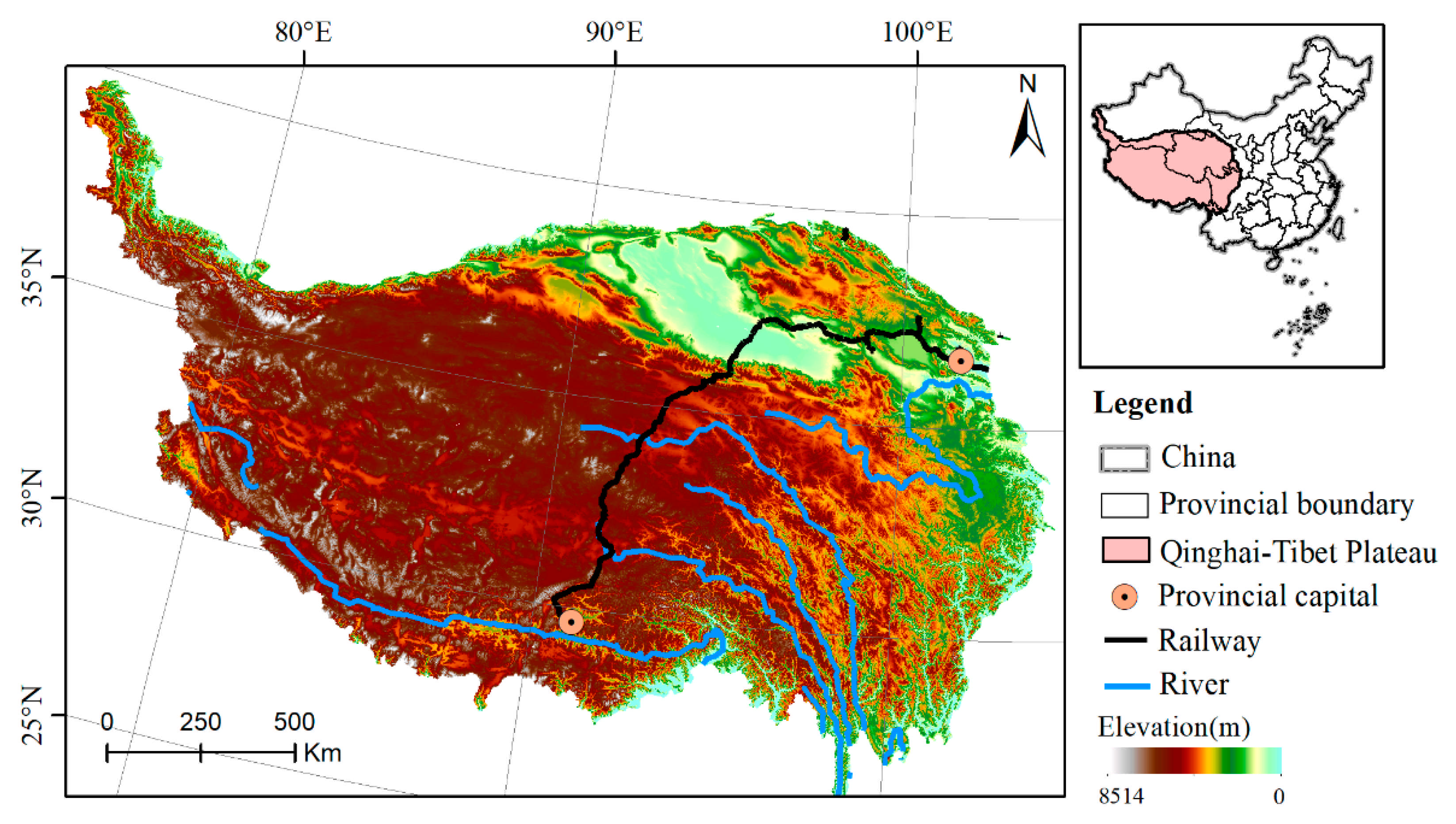
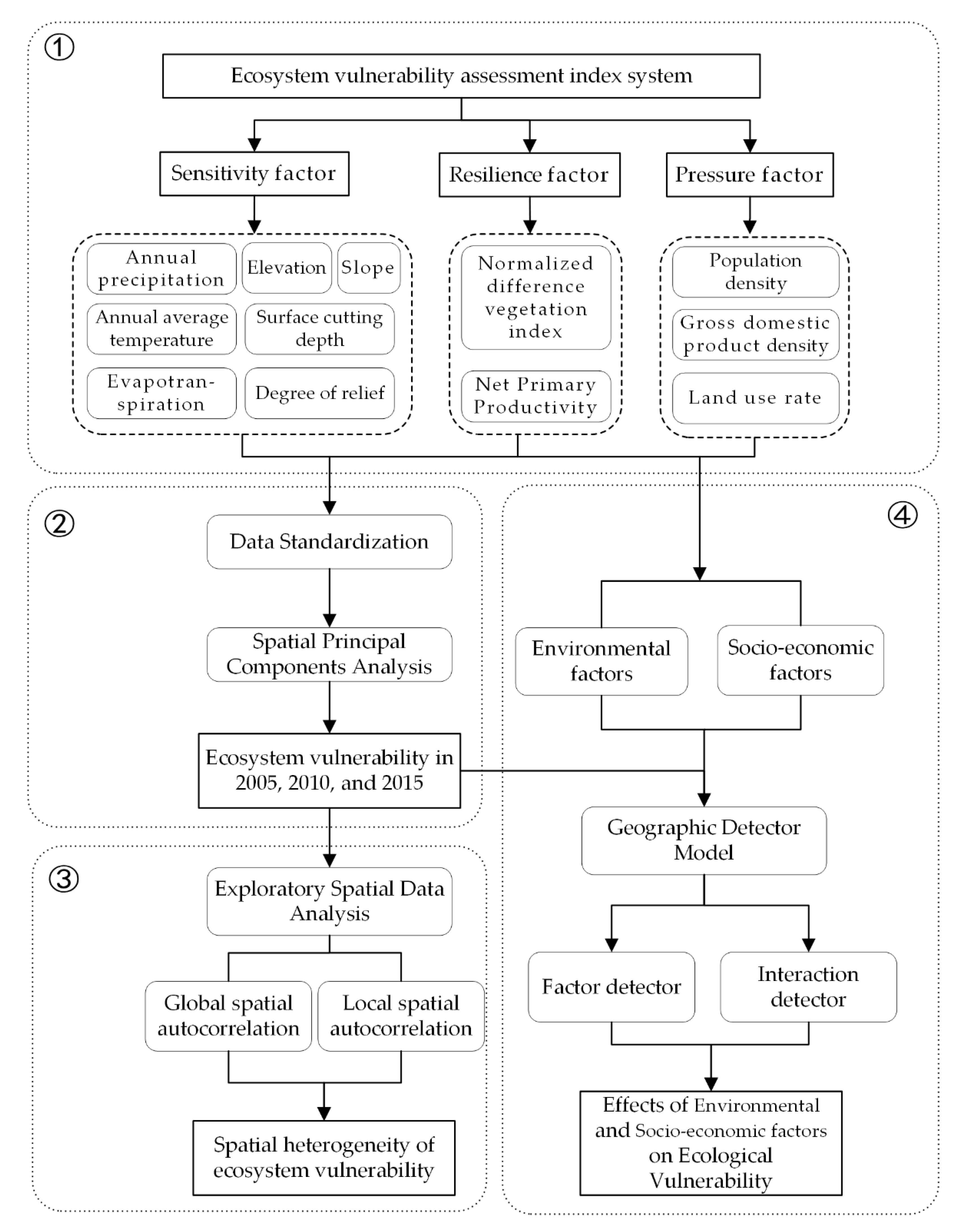

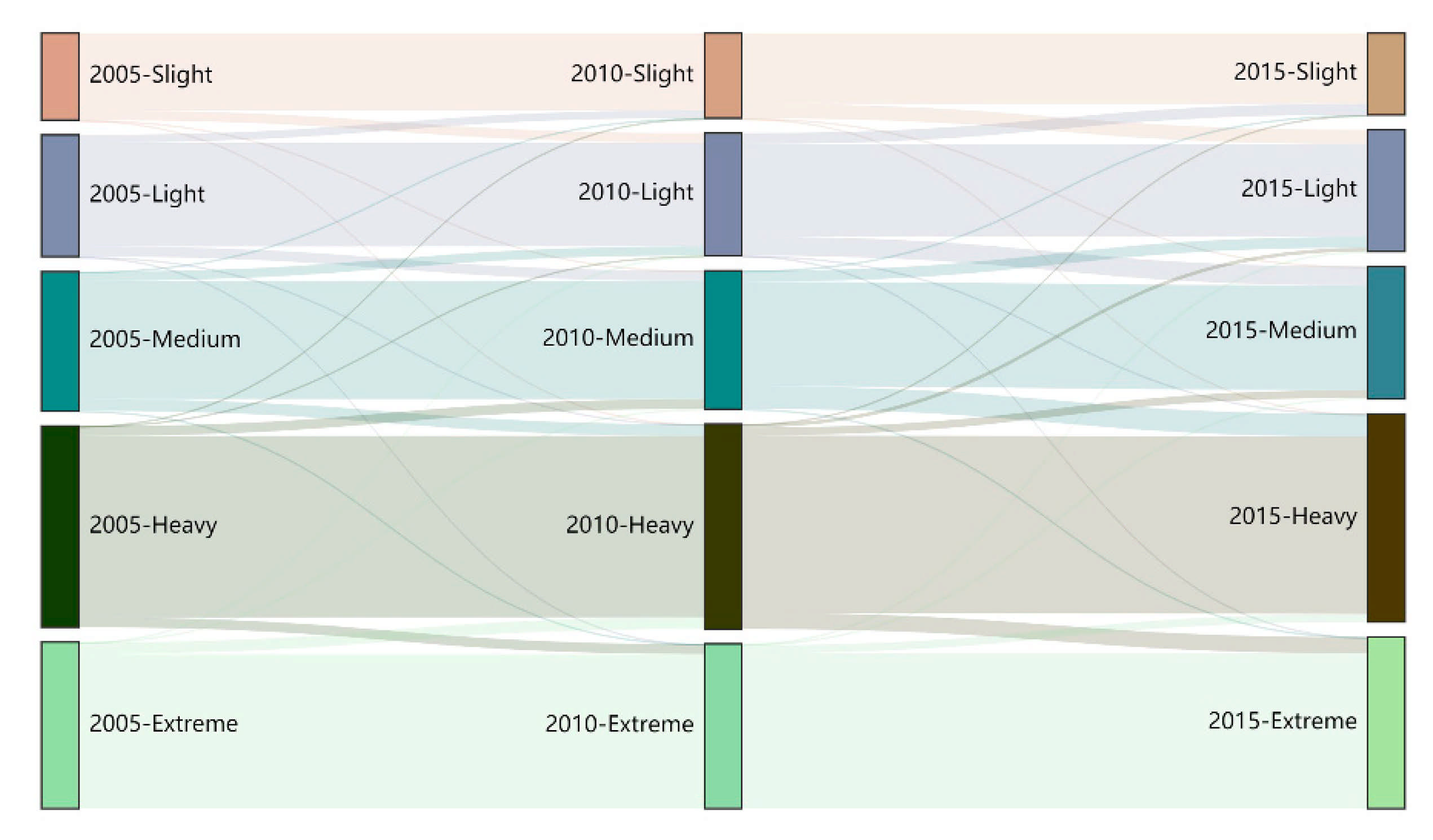
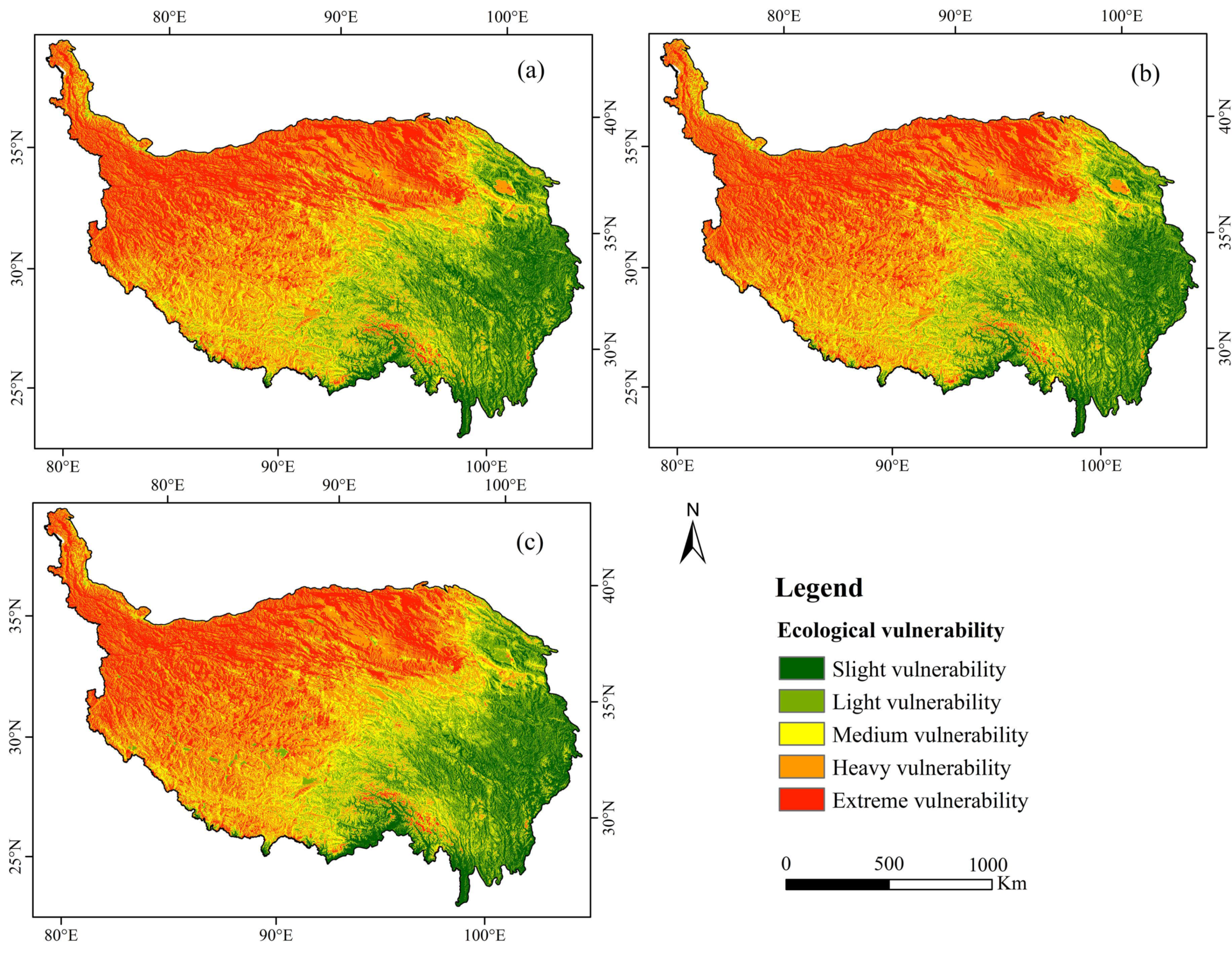
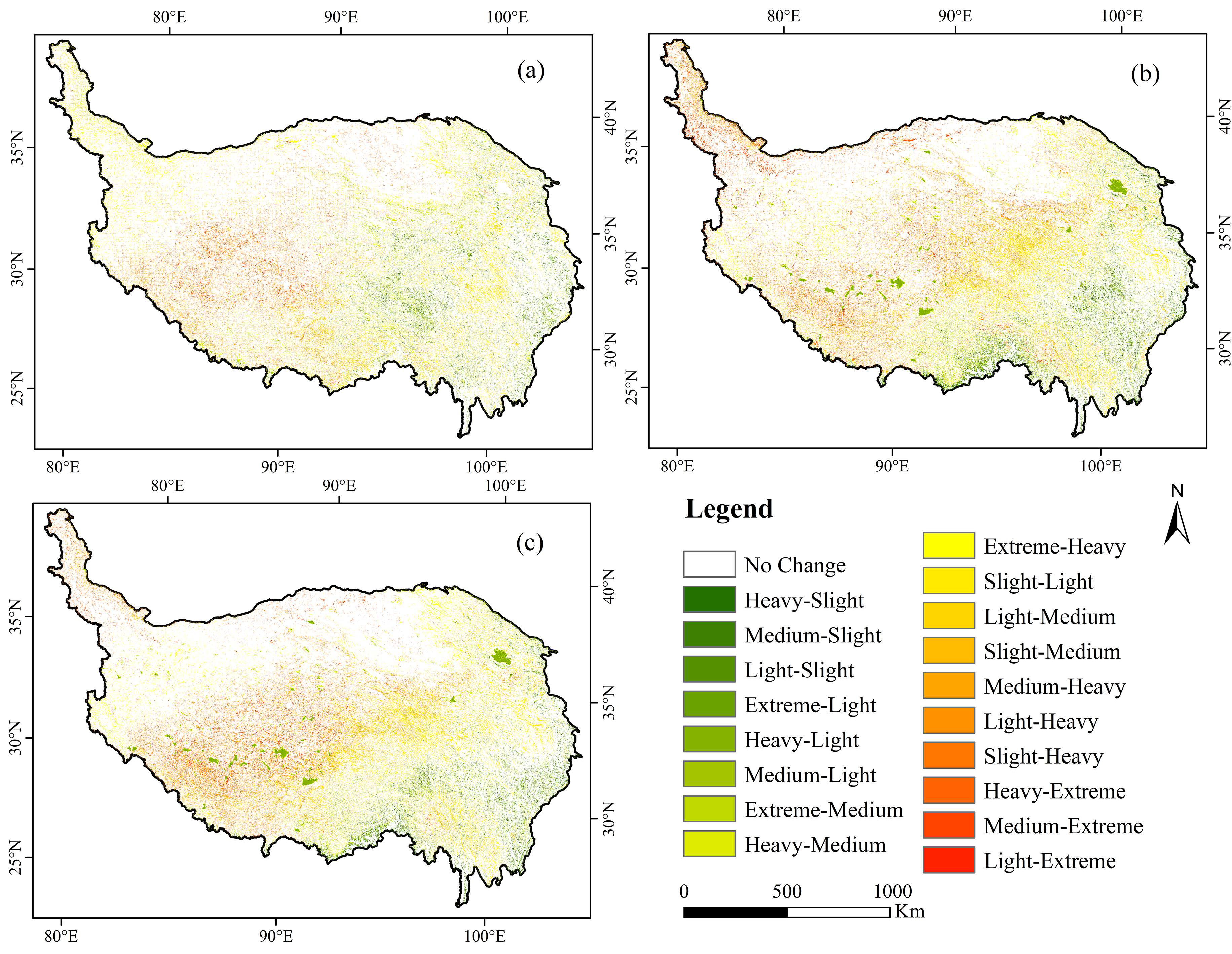
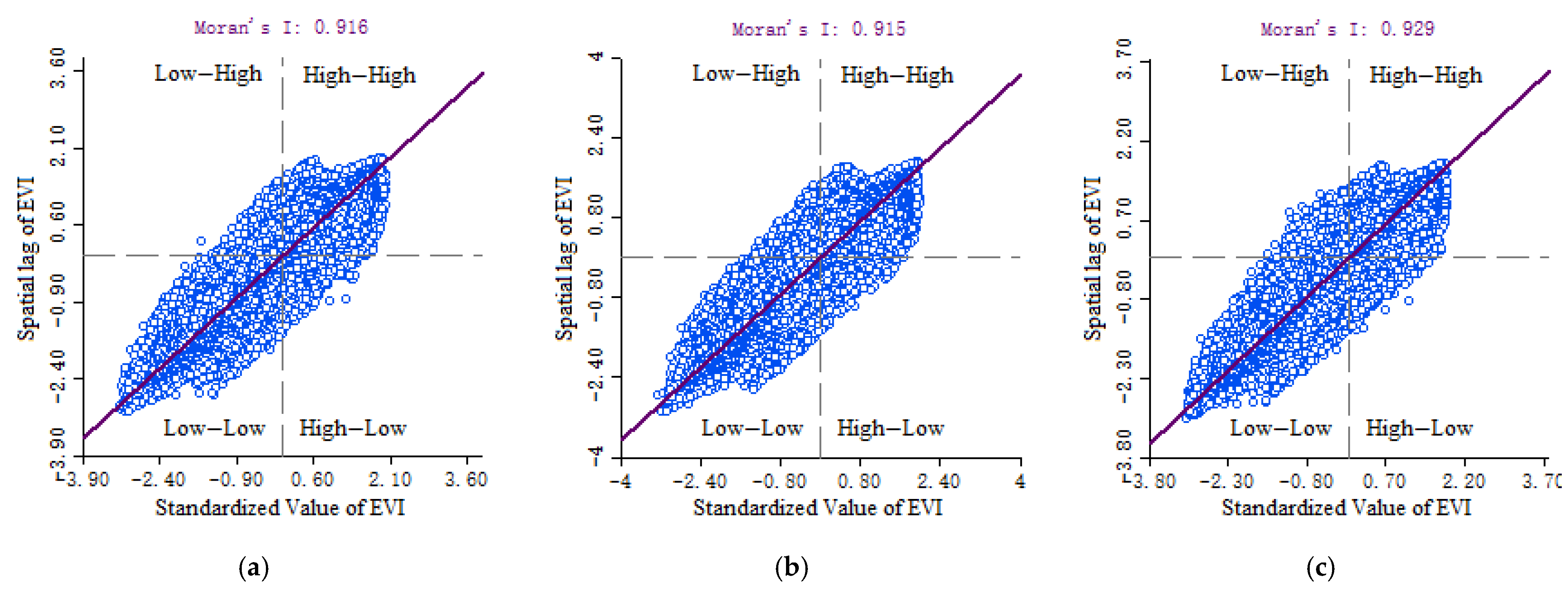
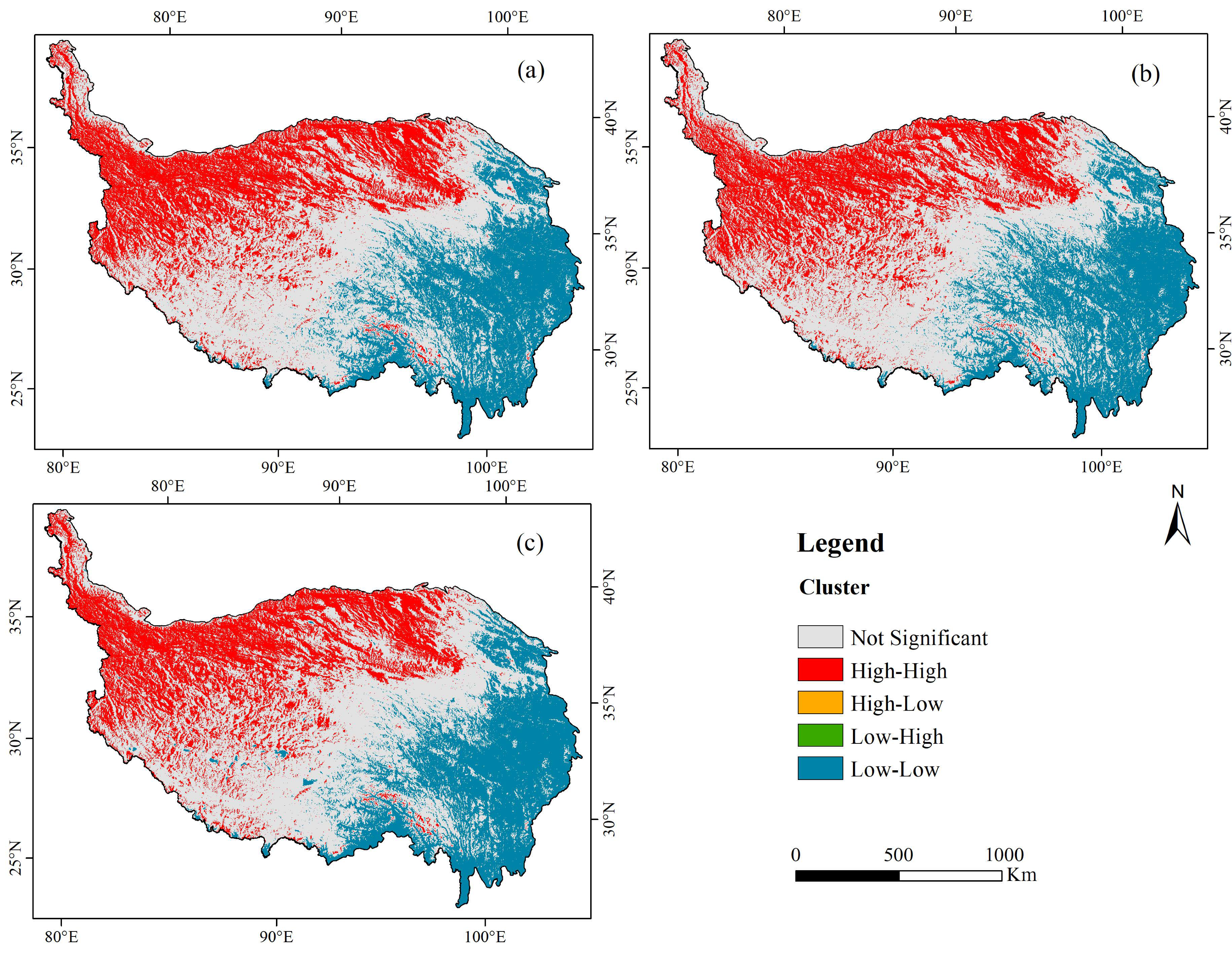
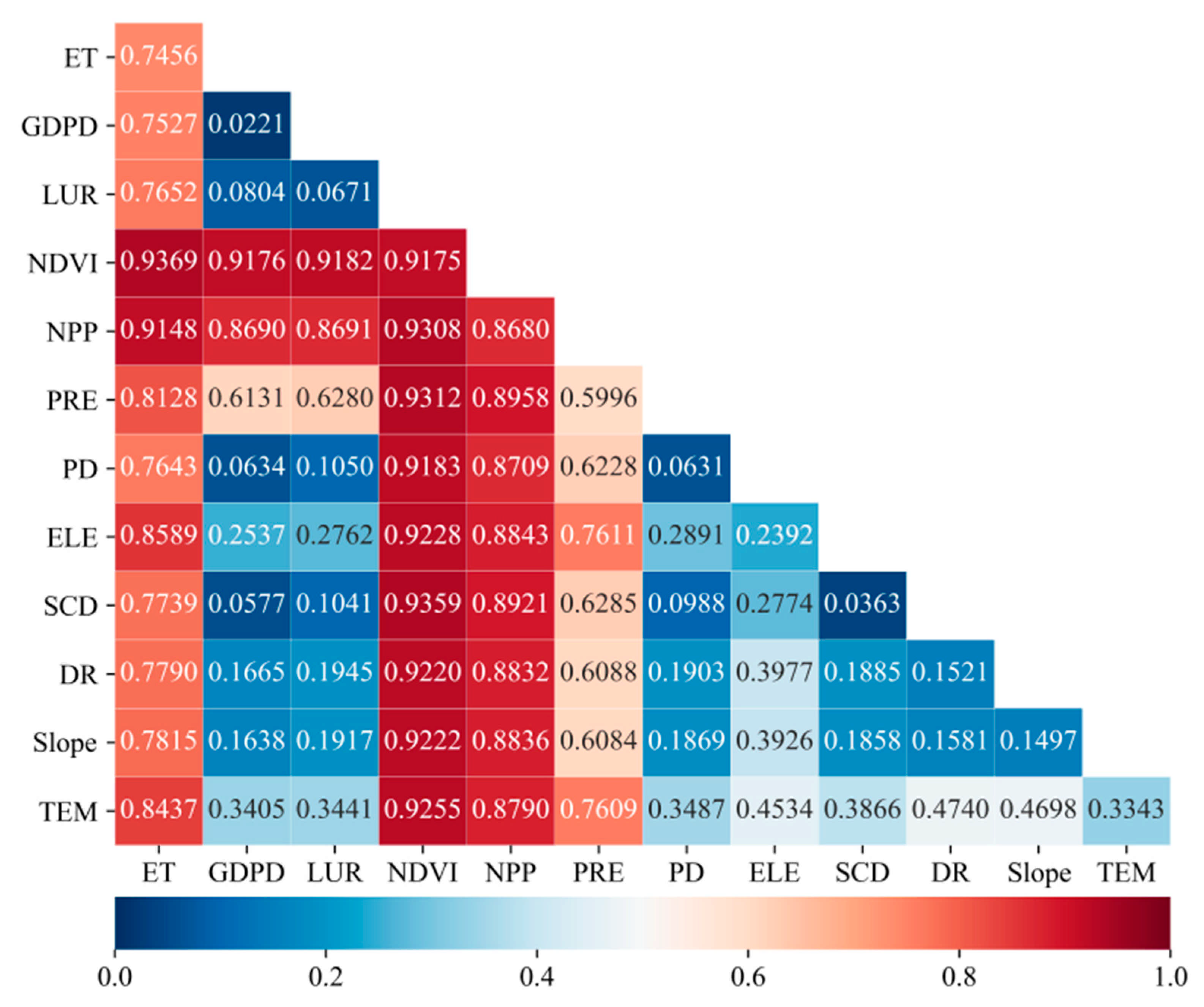
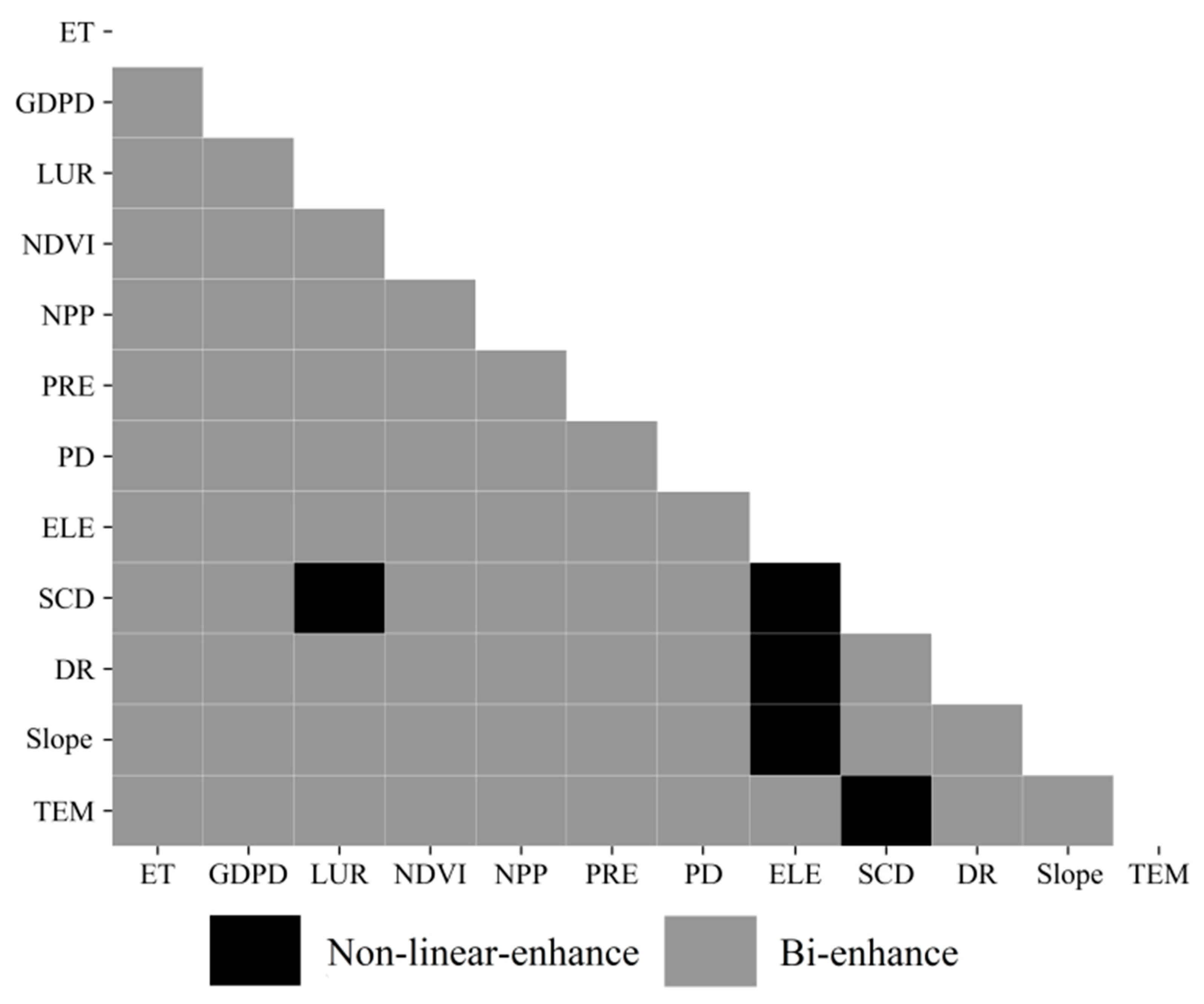
| Organization/Author | Definition of Ecosystem Vulnerability |
|---|---|
| Williams et al. [37] | The potential of an ecosystem to modulate its response to stressors over time and space, where that potential is determined by the characteristics of an ecosystem with many levels of organization. It is an estimate of the inability of an ecosystem to tolerate stressors over time and space. |
| Birkmann [38] | The sensitive response and self-restoring ability of an ecosystem when it is subjected to external interference. It usually occurs within a specific time and space and is an inherent attribute of the ecosystem. |
| IPCC [39] | The degree of sensitivity and self-regulation of an ecosystem to disturbances caused by climate change, including extreme weather events. |
| Year | Study Area | Level Indicators | Secondary Indicators |
|---|---|---|---|
| 2017 | Yellow River Delta, China [20] | Pressure, support, state, response | Land reclamation rate, population density, human disturbance index, normalized difference vegetation index (NDVI), afforestation area percentage, Shannon’s evenness index, ecological water percentage, pollution load, elastic degree of wetland evaluation; wetland area of change, gross domestic product |
| 2018 | Southern Shaanxi, China [10] | Environmental topography and socio-economic level | Cultivation ratio, land use rate, natural growth rate, population density, gross domestic product (GDP) per capita, agricultural output, industrial output, NDVI, average precipitation, average annual temperature, hours of sunshine, average elevation |
| 2018 | Jiangsu, China [56] | Pressure, state, response | Soil erosion sensitivity, soil desertification sensitivity, landscape patch density, landscape evenness, land resource use degree |
| 2020 | Ningxia Hui Autonomous Region, China [57] | Natural and social factors | Digital elevation model, hours of sunshine, average annual precipitation, average annual temperature, NDVI soil erosion and degree of land use, GDP, agricultural output, industrial output, population density, grassland area |
| 2020 | Karst Mountains, China [53] | Sensitivity, resiliency, pressure | Climate, soil, terrain, water, geology, vegetation, land use, social development, economic development |
| Type | Source | Spatial Resolution | Temporal Resolution |
|---|---|---|---|
| NDVI | MODIS/MOD13A3 [59] | 1 km | Monthly |
| Land use | RESDC [60] | 1 km | Yearly |
| DEM | RESDC | 1 km | Yearly |
| Annual average temperature | RESDC | 1 km | Yearly |
| Annual precipitation | RESDC | 1 km | Yearly |
| NPP | MODIS/MOD17A3 | 1 km | Yearly |
| ET | MODIS/MOD16A3 | 500 m | Yearly |
| Population | RESDC | 1 km | Yearly |
| GDP | RESDC | 1 km | Yearly |
| Factor Category | Indicator | Type |
|---|---|---|
| Sensitivity | Annual precipitation (PRE) | − |
| Annual average temperature (TEM) | − | |
| Evapotranspiration (ET) | − | |
| Elevation (ELE) | + | |
| Slope | + | |
| Surface cutting depth (SCD) | + | |
| Degree of relief (DR) | + | |
| Resilience | Normalized difference vegetation index (NDVI) | − |
| Net Primary Productivity (NPP) | − | |
| Pressure | Population density (PD) | + |
| Gross domestic product density (GDPD) | + | |
| Land use rate (LUR) | + |
| PC | Eigenvalues | Contribution Ratio of Eigenvalues/% | Cumulative Contribution of Eigenvalues/% | ||||||
|---|---|---|---|---|---|---|---|---|---|
| 2005 | 2010 | 2015 | 2005 | 2010 | 2015 | 2005 | 2010 | 2015 | |
| 1 | 0.0669 | 0.0729 | 0.0763 | 48.7327 | 48.5814 | 51.9332 | 48.7327 | 48.5814 | 51.9332 |
| 2 | 0.0391 | 0.0429 | 0.0392 | 28.5202 | 28.5649 | 26.6587 | 77.2529 | 77.1463 | 78.5920 |
| 3 | 0.0101 | 0.0105 | 0.0092 | 7.3796 | 7.0087 | 6.2786 | 84.6325 | 84.1550 | 84.8706 |
| 4 | 0.0070 | 0.0079 | 0.0072 | 5.0880 | 5.2544 | 4.8803 | 89.7204 | 89.4094 | 89.7509 |
| EVI | Slight | Light | Medium | Heavy | Extreme |
|---|---|---|---|---|---|
| Grading standard | <0.35 | 0.35–0.5 | 0.5–0.64 | 0.64–0.77 | >0.77 |
| Description | Interaction Type |
|---|---|
| q (X1∩X2) < Min (q (X1), q (X2)) | Non-linear-weaken |
| Min(q (X1), q (X2)) < q (X1∩X2) < Max(q (X1)), q (X2)) | Uni-weaken |
| q (X1∩X2) > Max (q (X1), q (X2)) | Bi-enhance |
| q (X1∩X2) = q (X1) + q (X2) | Independent |
| q (X1∩X2) > q (X1) + q (X2) | Non-linear-enhance |
| Factors | NDVI | NPP | ET | PRE | TEM | ELE | DR | Slope | LUR | PD | SCD | GDPD |
|---|---|---|---|---|---|---|---|---|---|---|---|---|
| q statistic | 0.918 | 0.868 | 0.746 | 0.600 | 0.334 | 0.239 | 0.152 | 0.150 | 0.067 | 0.063 | 0.036 | 0.022 |
| p Value | 0.000 | 0.000 | 0.000 | 0.000 | 0.000 | 0.000 | 0.000 | 0.000 | 0.000 | 0.000 | 0.000 | 0.000 |
Publisher’s Note: MDPI stays neutral with regard to jurisdictional claims in published maps and institutional affiliations. |
© 2021 by the authors. Licensee MDPI, Basel, Switzerland. This article is an open access article distributed under the terms and conditions of the Creative Commons Attribution (CC BY) license (https://creativecommons.org/licenses/by/4.0/).
Share and Cite
Li, H.; Song, W. Spatiotemporal Distribution and Influencing Factors of Ecosystem Vulnerability on Qinghai-Tibet Plateau. Int. J. Environ. Res. Public Health 2021, 18, 6508. https://doi.org/10.3390/ijerph18126508
Li H, Song W. Spatiotemporal Distribution and Influencing Factors of Ecosystem Vulnerability on Qinghai-Tibet Plateau. International Journal of Environmental Research and Public Health. 2021; 18(12):6508. https://doi.org/10.3390/ijerph18126508
Chicago/Turabian StyleLi, Han, and Wei Song. 2021. "Spatiotemporal Distribution and Influencing Factors of Ecosystem Vulnerability on Qinghai-Tibet Plateau" International Journal of Environmental Research and Public Health 18, no. 12: 6508. https://doi.org/10.3390/ijerph18126508
APA StyleLi, H., & Song, W. (2021). Spatiotemporal Distribution and Influencing Factors of Ecosystem Vulnerability on Qinghai-Tibet Plateau. International Journal of Environmental Research and Public Health, 18(12), 6508. https://doi.org/10.3390/ijerph18126508







